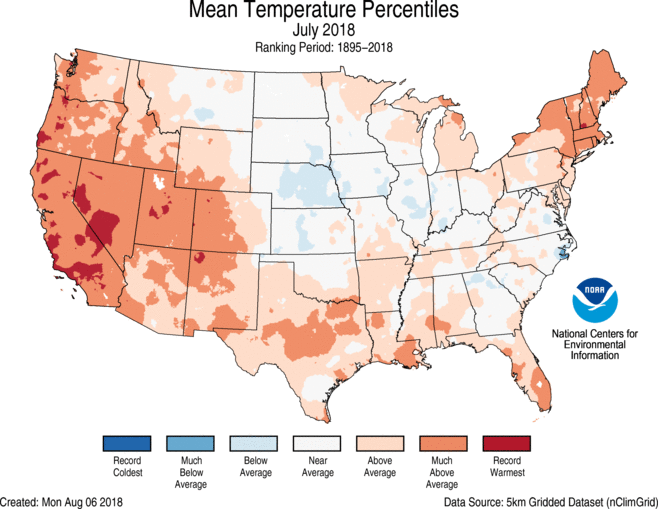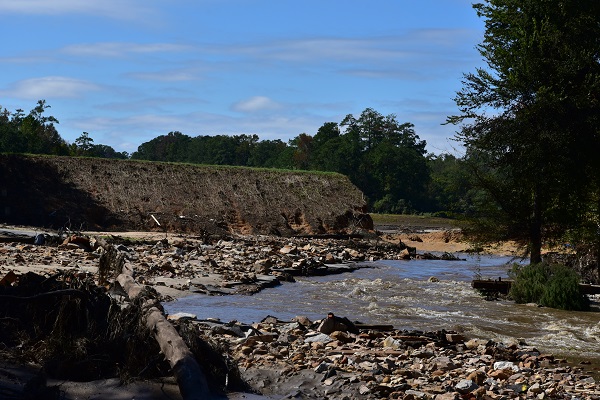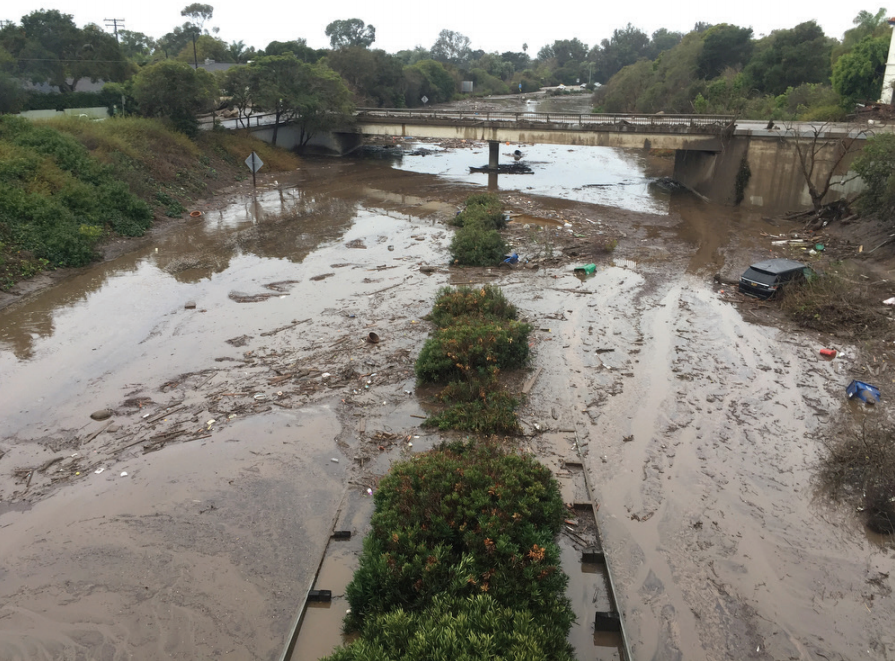Is it hot enough for you? If not, it will be.
According to California’s “Fourth Climate Change Assessment” released in late August, the average annual maximum daily temperature is projected to increase by 5.6 to 8.8 degrees by the year 2100.
These temperatures bring more than short-term discomfort. “Extreme heat causes more deaths than any other weather-related hazard — more than hurricanes, tornadoes, or flooding, and an average of more than 65,000 Americans visit emergency rooms each summer for acute heat illness,” according to the Center for Climate and Energy Solutions and the Centers for Disease Control.

Above average temperatures across the country continue to serve as a reminder of the warming trend. (Source: The National Oceanic and Atmospheric Administration)
This public health issue has become a call to action for architectural, engineering, and consulting professionals.
For example, the American Society of Landscape Architects and its members are addressing extreme heat through resilient planning and design. “Landscape architects play a lead role in greening our cities and communities in order to make them cooler,” said the Association. “While a patchwork of trees, gardens, and green roofs cannot decrease temperatures, a system of them, combined with other tactics, such as the use of light-colored building materials, can be effective.”
Architects and engineers have been applying resilient design strategies so that buildings and infrastructure can better withstand sea-level rise, more powerful storms, and diminishing water resources. Resilient design is also being applied to deal with extreme heat.
These elements include better insulation, roofs painted white to reflect heat energy, green roofs full of vegetation, backup generators to run air conditioning, designs that maximize ventilation and air movement, trees to provide shade, and “cool” pavements to mitigate the urban heat island effect.
IMS covers public sector projects for the A/E/C industry via in-depth research, daily project leads from RFPs and RFQs, and Advanced Notice information on upcoming opportunities. IMS has covered hundreds of thousands of projects for RFPs and RFQs since it was established in 1991. But few, if any, of these public sector solicitations included “extreme heat” until 2018. These trending projects include:
* In late August 2018, the Delaware State Housing Authority issued an RFP for a consultant to conduct a risk analysis and resiliency assessment of its affordable housing portfolio related to the impacts of climate change, including flooding and extreme heat (IMS 439651).

Flooding in 2015 breaks apart this South Carolina dam. (Source: FEMA/Bill Koplitz)
* Also in late August, the County of Charleston, SC, released an RFP for an all-hazards vulnerability and risk assessment to geospatially identify populations and assets that are vulnerable to various physical threats such as sea-level rise, extreme precipitation, extreme heat, and storm surges (IMS 439381).
* In May 2018, IMS published an Advance Notice for a Community Mobility Resilience Plan. The City of Elk Grove, Calif., may be seeking a consultant to prepare mobility resilience plan to develop responses to climate change impacts on the local transportation system. Project goals will be to address extreme heat and flooding (IMS 429021).
Heat inequality, or heat vulnerability, means that extreme heat events do not affect all parts of a city in the same way.
In the Philadelphia area, temperatures in Hunting Park can be 20 degrees warmer than in other tree-lined neighborhoods, according to a PlanPhilly article titled “Exploring Ways to Cool Down Neighborhoods Vulnerable to the Heat.” Sophie Sarkar, of Philadelphia’s Office of Sustainability, says “It’s a neighborhood with a long history of industry, there’s a lot of pavement, there’s aging housing infrastructure with lots of black rooftops [which absorb heat], and also if you look at maps of tree canopy, there are many fewer trees in this part of town.”
Another PlanPhilly article reported that “municipal agencies are applying several strategies to adapt new and existing housing stock to the new climate reality, and to heat in particular. For now, most of those strategies have to do with energy efficiency.”
Louisville, Kentucky, is also focused on urban heat island management. A city initiative called Cool502 is promoting cool roofs, green roofs, tree planting, and lighter paving products for its streets. Policy efforts include long-range transportation planning and pledges to reduce greenhouse gas emissions. “Cool502 — addressing the urban heat island effect — will be a gradual process and a citywide effort. This effort will help Louisvillians live longer, happier lives, and help our city become an even better and healthier place to live and work,” said its Office of Sustainability.

Worsening droughts across the country affect both urban and rural environments. (Source: USDA-NRCS/Beverly Mosely)
IMS has covered several heat island projects, including:
* The District of Columbia issued an RFP in August 2018 to create map layers to assess the urban heat island in the District and to identify areas with the greatest potential for cooling (IMS 437254).
* For its Urban Heat Island Mitigation Project, the New York State Energy Research and Development Authority issued an RFP in April 2018 for landscape architect/planning and or arborist services for an urban forestry program in the Bronx that will maximize the environmental benefits of strategically sited sustainable infrastructure (IMS 425184).
A week after California’s Climate Change Assessment was released, the state’s Climate-Safe Infrastructure Working Group announced its recommendations to help “design and construct infrastructure to withstand higher temperatures, more frequent and intense storms, drought, wildfires and sea-level rise.” The Working Group provided “critical information that engineers responsible for infrastructure design and construction need to address climate change impacts.” The report is now available at http://resources.ca.gov/climate/climate-safe-infrastructure-working-group/.
There have long been design standards to avoid damage from 100- or 200-year floods. The last decade has brought greater awareness and planning for droughts and water shortages. And architects and engineers have begun incorporating sea-level rise forecasts into public infrastructure plans.

Extreme droughts and flooding can both contribute to severe disasters, as was the case in Montecito, CA earlier this year. (Source: California’s Fourth Climate Change Assessment)
* The City of Miami Beach, FL, issued an RFQ in July 2018 for a consultant to prepare an integrated water management master plan. Materials testing and pre-design surveys were some necessary components to prepare for and mitigate anticipate sea-level rise (IMS 436042).
* The New York City Economic Development Corporation also released an RFP in July 2018 for a consultant to provide engineering for bulkhead repair and replacement along Coney Island Creek. Potential flooding due to future sea-level rise has created a need to strengthen the existing bulkheads (IMS 434581-1).
IMS now expects to see more RFPs, local codes, and developer incentives that target the effects of extreme heat. The heat waves of today and tomorrow are more than an inconvenience. Extreme heat will literally become part of the design and engineering climate.

